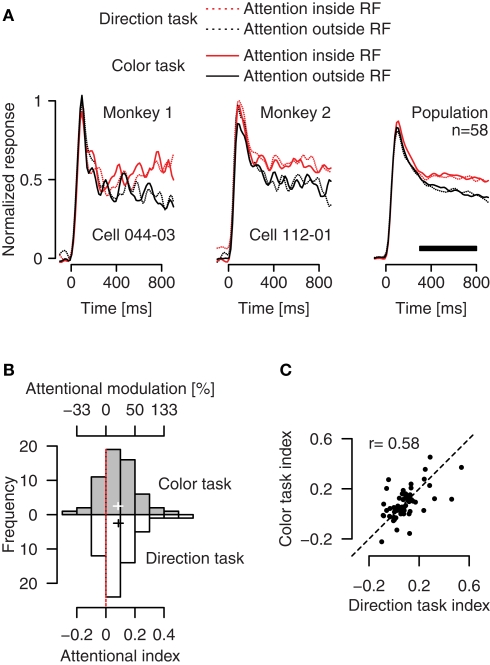Figure 3.
Effects of directing attention to a colored motion stimulus inside vs. outside the RF, separately for a direction and a color task. (A) Attending to the motion signal of a preferred-direction stimulus inside (red dotted trace) vs. outside (black dotted trace) the RF enhances activity of MT neurons. The same modulation is evident if attention is directed to the color of these stimuli (solid traces). Left and middle panels: Effects for single MT neurons. Right panel: Firing rates averaged over a population of 58 neurons. (B) Distribution of the attentional effects for the recorded population, separately for conditions in which attention was directed to the motion signal (white bars) or to the color (gray bars). Binning is based on the attentional index AI = (frin − frout)/(frin + frout), where fr represents the firing rate in conditions in which attention is directed to the stimulus inside (in) or outside (out) the RF (time window 300–800 ms relative to stimulus onset, marked by the black horizontal bar in (A). The top scale gives the corresponding percentages. The cross indicates the mean attentional index with its horizontal arms spanning the 95%-confidence interval. (C) The size of the attentional effect in the direction task is strongly correlated with the size of the effect in the color task. Circles represent individual neurons.

